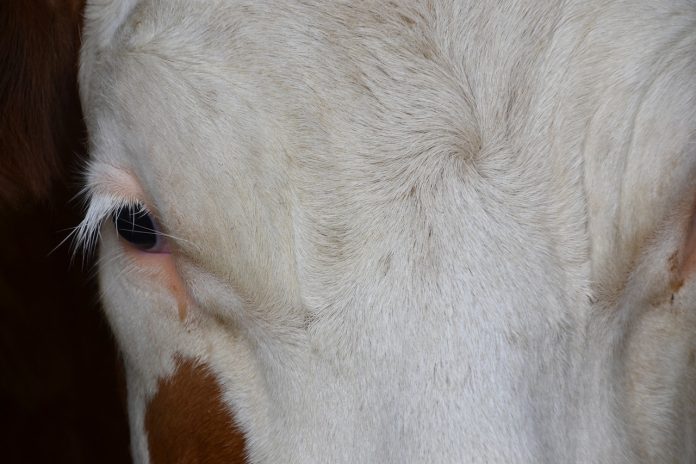Not only has pinkeye (Moraxella Bovis) reared its ugly head again this year, it has brought its bigger, tougher brother, Moraxella Bovoculi, to the fight.
Both forms are of bacterial origin. Last year, pinkeye was a challenge in Pennsylvania cattle herds.
This summer is promising to be even more difficult than last with the prevalence of this newer strain of pinkeye in the state. Bovoculi was previously detected in the eyes of healthy calves when conducting cultures during a research study in 2002 at The Meat Animal Research Center in Nebraska.
Some suggest lighter colored cattle are more susceptible to the challenges of pinkeye, but bovoculi appears to be equally challenging for all breeds.
Fly control
As with all forms of pinkeye, fly control helps reduce the incidence in a herd. Face flies are extremely efficient at moving pinkeye from animal to animal. Make sure to include the calves in the herd in the fly control program. They can also be a source of the bacteria responsible for pinkeye in the cow herd.
Bovoculi is an extremely aggressive form of pinkeye. Once it gets a start in the cow herd, it appears to be very aggressive and moves through the herd at a higher rate of speed than common pinkeye. It also seems to be less responsive to traditional treatments, with outbreaks in individual animals lasting weeks at a time.
Irritants
Any potential eye irritants may increase the prevalence of pinkeye. For example, tall dry grass seed heads have a tendency to become dislodged from the plant and end up in the eyes of cattle, especially calves as they begin to graze.
Any and all eye irritants will cause an eye to tear. As a result, bacteria will also be shed. Eye irritation can be caused by any plants that have awns, which can stick in the eye and cause significant damage, irritation and watering of the eye.
Face flies that are attracted to this tearing can easily spread the pinkeye organisms between animals.
The bacteria in the tears of a few “carrier animals” in the herd are the initial source for a pinkeye outbreak. The carrier animals then spread the organism by contact and/or via face flies to the rest of the herd.
Examination
It’s important to check cattle’s eyes for early signs or symptoms of pinkeye.
Cattle being examined for pinkeye should also be checked for foreign plant material in the eye. Any foreign plant material must be removed so the eye can heal. With uncomplicated pinkeye, the damage usually begins in the center of the eye and spreads outward. With an awn or other foreign body, the damage will be “off-center”.
Examining the eye also creates another opportunity to spread of the disease between animals. Adherence to strict biosecurity between animals will help control the spread of the disease. Consider wearing examination gloves when dealing with pinkeye, and be sure to change your gloves between animals.
Any equipment used on animal with pinkeye should be disinfected routinely. Nolvasan is an excellent choice because it is not irritating to eye tissues and works well as a disinfectant. Your veterinarian can also suggest other disinfectants.
Vaccinations
Your veterinarian may be the most important part of your prevention plan. Get your veterinarian’s advice about prevention before the outbreak.
Topics to be covered should include fly control, vaccines, disinfectants, tools and supplies to have on hand for prevention and treatment and treatment protocols and any necessary prescriptions.
Vaccines can prevent pinkeye, but there are a relatively large number of vaccines available, which usually means no single vaccine works perfectly.
It is usually recommended to start with one of the commercial vaccines suggested by your veterinarian. He or she will know which vaccines are currently working well in your area and more importantly, which are not working.
Most vaccines for pinkeye require 2 doses, generally 2 to 3 weeks apart, to be effective. It usually takes a month or more for immunity or protection to develop. Thus, the most effective vaccination programs begin well before the start of pinkeye season.
Be sure to vaccinate for both Bovis and Bovoculi each year. If you select only one, you most likely will have trouble with the other form. The pinkeye agent is a bacterium, so antibiotics are indicated for treatment.
There are some liquids and spray-type products still available for pinkeye treatment. Just remember, these products only stay in the eye for about 7 minutes before the tears wash it out and therefore, are much less effective than antibiotics.
Consider reviewing your current mineral program. The mineral program is important for the animal’s immune response to pinkeye. If cattle are copper or selenium deficient, they will have a greater number of pinkeye cases with a greater severity.










